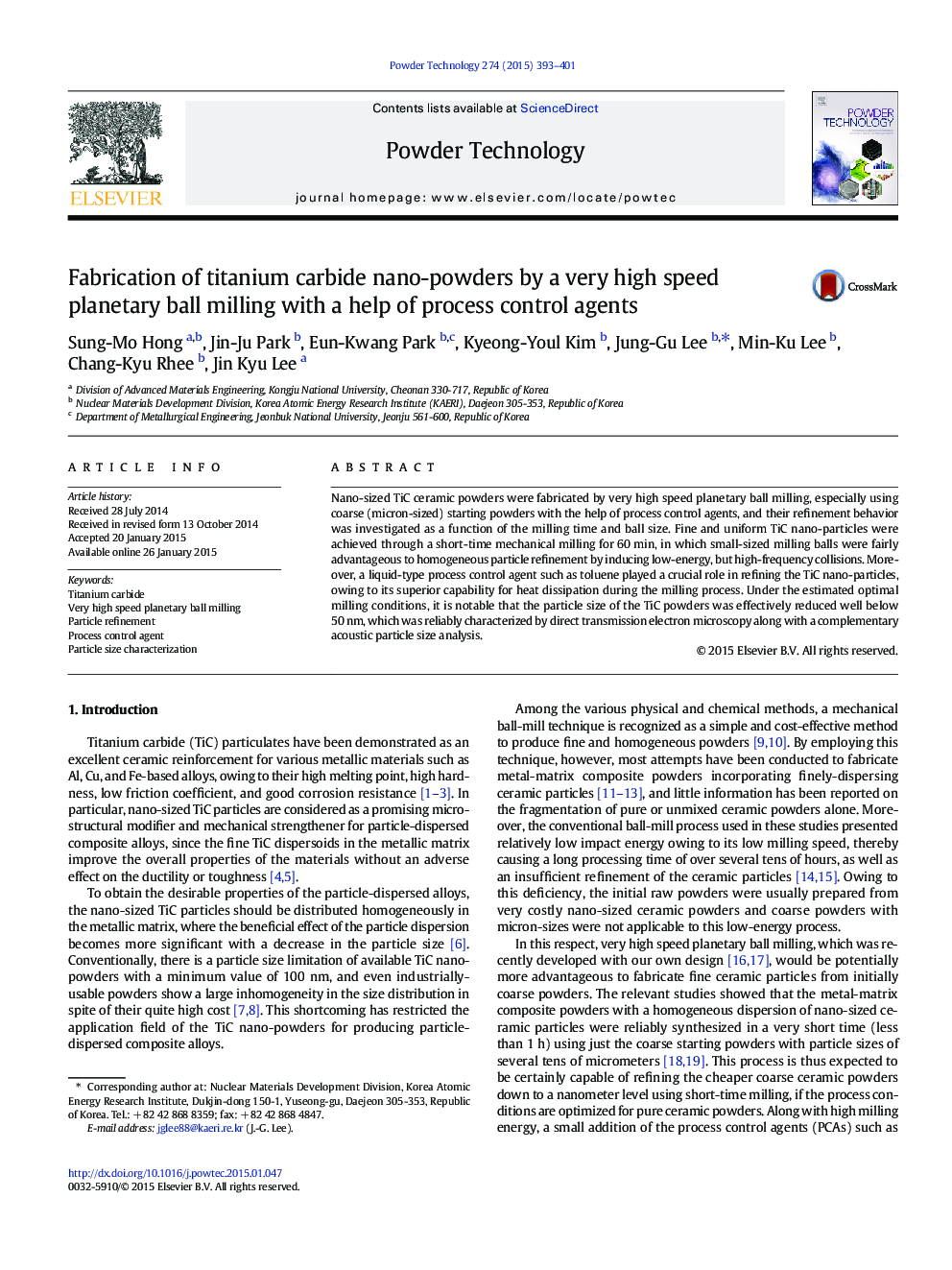| Article ID | Journal | Published Year | Pages | File Type |
|---|---|---|---|---|
| 235738 | Powder Technology | 2015 | 9 Pages |
•Nano-sized TiC powders were fabricated by a very high speed planetary ball milling.•Particle size was reduced well below 50 nm in a short milling time of 60 min.•Small balls were advantageous to milling by inducing high-frequency collisions.•Liquid process control agent effectively refined the particles by heat dissipation.•Particle size was quantified reliably using three distinct measuring techniques.
Nano-sized TiC ceramic powders were fabricated by very high speed planetary ball milling, especially using coarse (micron-sized) starting powders with the help of process control agents, and their refinement behavior was investigated as a function of the milling time and ball size. Fine and uniform TiC nano-particles were achieved through a short-time mechanical milling for 60 min, in which small-sized milling balls were fairly advantageous to homogeneous particle refinement by inducing low-energy, but high-frequency collisions. Moreover, a liquid-type process control agent such as toluene played a crucial role in refining the TiC nano-particles, owing to its superior capability for heat dissipation during the milling process. Under the estimated optimal milling conditions, it is notable that the particle size of the TiC powders was effectively reduced well below 50 nm, which was reliably characterized by direct transmission electron microscopy along with a complementary acoustic particle size analysis.
Graphical abstractFigure optionsDownload full-size imageDownload as PowerPoint slide
